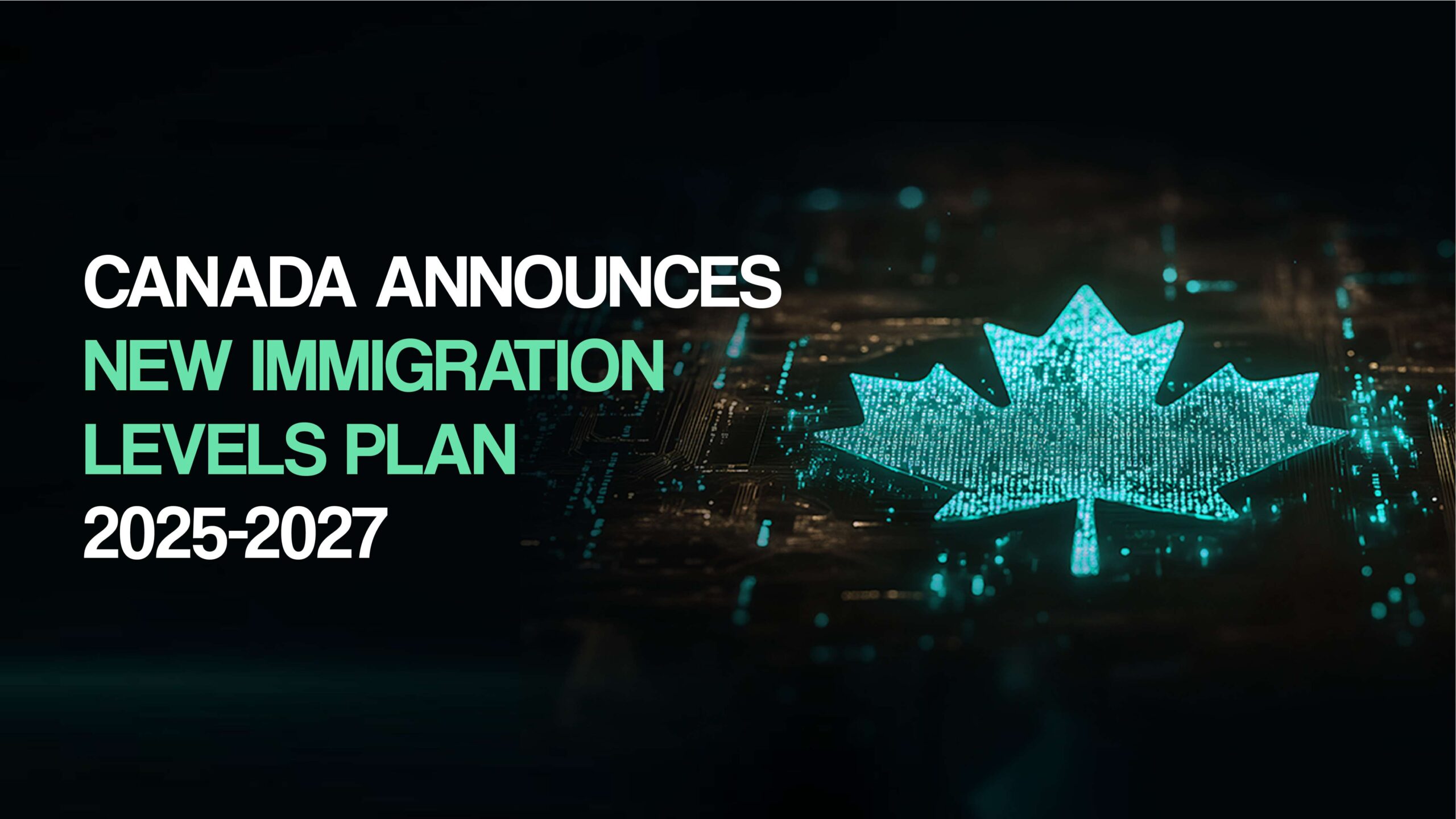Canada Announces New Immigration Levels Plan 2025-2027
Canada’s new immigration plans aim to strengthen its economy, reunite families, and help refugees. The new Immigration Levels Plan 2025-2027 is a guide for the Canadian government to carry out its operations.
So, what is the new immigration Levels Plan 2025-2027, and what do you need to know about it?
The New Immigration Levels Plan 2025 -2027
The Federal Department of Immigration, Refugees, and Citizenship Canada (IRCC) releases a new Immigration Levels Plan every year to use as a guide to carry out its operations.
Canada’s newcomer target for 2025 is 395,000 new permanent residents (PRs), followed by a reduction in permanent resident immigration levels to 380,000 residents. The year 2027 will see a further decrease in total permanent residents to 365,000 new residents.
Per the latest plans, Canada plans to offer permanent residence to eligible temporary residents already in the country. The aim is to bring down the temporary resident population by 5% by 2026.
Important Highlights of the New Immigration Levels Plan
Now that we know a bit about the latest Immigration Levels Plan 2025-2027, let’s examine its important points.
↳ With this plan, Canada aims to invite 1.1 million immigrants by 2027 to the country.
↳ The plan also aims to offer Canada PR visas to 40% of current temporary residents.
↳ Additionally, Canada will open its doors to permanent residents associated with key sectors such as health and trade. The country aims to invite 62% of permanent residents in these sectors.
Why Does the Country Need Immigrants?
Canada needs and welcomes high-level immigrants to keep its economy strong. One of the world’s oldest populations and also one of the world’s lowest birth rates, Canada faces lots of economic and fiscal pressures.
The low rate of natural population growth results in low labor force and economic growth rates. This low economic growth makes it difficult for Canada to raise the taxes it requires to support social spending on services such as healthcare, education, and other crucial areas that offer high living standards.
Result: Increase in immigration levels.
Canada has been raising its immigration levels since the late 1980s to improve its population rate, labor force, and economic growth.
So, now Canada is dependent on immigration for the significant growth of its population and labor force and to an extent, a larger share of its economic growth.
If these reasons are not enough to understand why Canada needs immigrants, here is a significant one: By 2030, about 9 million baby boomers will reach the retirement age of 65 in Canada.
Implying Canada will face labor challenges at a time when its social spending on healthcare will rise. And to overcome these challenges, Canada has been proactive by gradually increasing its immigration targets for more than 30 years now.
Since 1988, Canada has regularly welcomed more than 200,000 immigrants, and its immigration rate is now 1.2%. In simple words, Canada welcomes three times more immigrants on a per capita basis than the US.
Result: Immigration will be critical for the Canadian government to support a healthy economy and fiscal situation in the country.
Immigration Levels Plan 2025-2027 – Main Objectives
When developing the Levels Plan, Immigration, Refugees, and Citizenship Canada (IRCC) considers
↳ Priorities and objectives for immigration, including those set out in the immigration Refugee and Protection Act.
↳ Economic and regional needs
↳ International obligations and commitment
↳ Processing capacity
↳ The capacity to settle, integrate, and retain newcomers
But the main objective of the Levels Plan is to invite about 62% of permanent residents related to healthcare and trade sectors.
Final Words
Immigration is critical for the economic and fiscal growth of the country and a permanent resident visa is the ideal way to increase the immigration rate in Canada. Additionally, the other way to increase the PR rate is by offering PR visa to temporary residents in the country.
FAQs
Q1 What is the new Immigration Plan in Canada 2024?
As Per the new Immigration Plan in Canada 2024, Canada aims to reduce the number of temporary residents to 5% of the total population over the next three years. This will include temporary foreign workers and international students.
Q2. What are the upcoming changes in Canada?
The upcoming changes in Canada include the 2025-2027 Immigration Levels Plan. The plan is expected to result in a marginal decline in population of 0.2% in both 2025 and 2026 before it again returns to a population growth of 0.8% in 2027.
Q3. What is the new rule for Canadian immigration?
As per the new Canadian immigration rule, the annual target for permanent residents will decrease from 500,000 to 395,000 by 2025, representing a reduction of about 20-21%.
Q4. Will Canada stop giving PR after 2025?
No, Canada will not stop giving PR after 2025, but there will be a significant drop of 20% in immigration.
The immigration numbers are expected to drop by about 446,000 in 2025 and 2026. However, Canada will accept only 17,400 new non-permanent residents by 2027.




